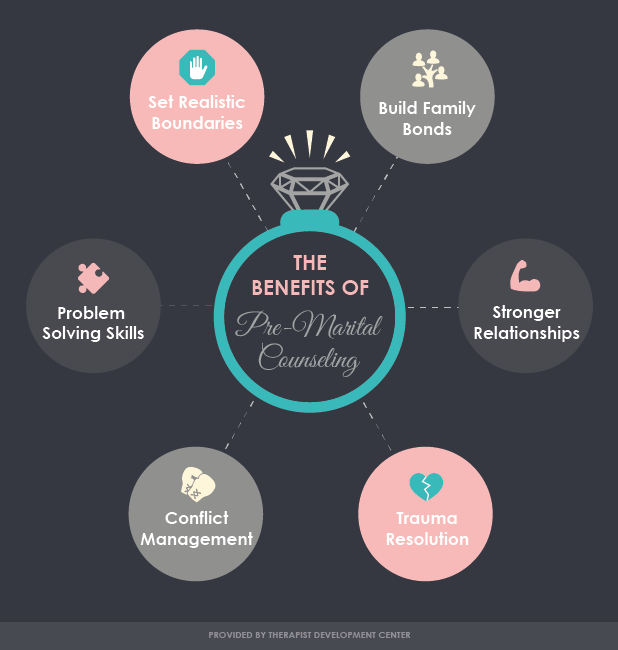Everything about Aim Point Counseling
Table of ContentsAim Point Counseling - TruthsThings about Aim Point CounselingThe Main Principles Of Aim Point Counseling Aim Point Counseling Can Be Fun For EveryoneGetting The Aim Point Counseling To WorkSome Of Aim Point Counseling
The longitudinal design involves a pre-treatment study and 2 follow-up surveys at 3- and 12-months post-intervention. The study is set in eight Relationships Australia Victoria centres, throughout urbane, external suburban areas, and regional/rural websites. Relationships Australia, a non-government organisation, is the largest company of couple therapy and relationship solutions in Australia.
These high rates of relationship break down have been continually associated with negative wellness effects for both grownups and youngsters following divorce/separation.
6 Simple Techniques For Aim Point Counseling
Longitudinal studies also recommend that kids of divorce have a greater incidence of emotional problems, medicine and alcohol usage, and risky sex-related behaviour [7] The effects of separation and separation can be damaging, study suggests that high relationship dissonance in intact couples is additionally likely to have unfavorable end results.
Variables that influence the results of these solutions need extensive examination. Research to date has actually identified both couple and specific elements that might contribute to relationship dissonance. These include relationship contentment and commitment at the pair degree, and anxiety at the private level. However, robust research study to examine relationship-enhancing interventions in the community are limited.
The Basic Principles Of Aim Point Counseling
Partnership contentment has been the most usual end result variable determined in greater than 200 analyses of pair therapy [11,12] Research studies have located substantial enhancements in connection contentment from pre- to post-treatment [13,14] and over the program of one to two years complying with coaching [15] In these studies, connection fulfillment was most often evaluated using the Dyadic Change Scale (DAS) [16] While a lot of studies suggest improvements in partnership satisfaction adhering to couple therapy, they are limited by the samples and measures utilized, greatly short-term follow-up time frames, and evaluations that do not account for the dyadic nature of pair data - male counselor. Relationship commitment, based upon measures such as the Dedication Supply (CI) [19], is another typically investigated connection end result.
To summarise, research study indicates that couple-specific variables in addition to specific elements may anticipate the results of couple therapy and connection solutions. The causal direction of these connections, nevertheless, is less clear. These observations are very important, because, to validate and assist the application of connection solutions such as pair therapy, empirical proof must explore both the results of connection services and the elements that forecast successful therapy.
, at least in some European nations.

We currently understand little concerning the profiles of couples who choose connection education compared with those that look for relationship therapy, or the results of these programs. Unscientific evidence suggests that there may be substantial distress amongst at the very least some pairs seeking relationship education. Connection education programs vary from pair therapy as they are normally very structured, carried out in groups, and focus on a combination of 4 elements; awareness, feedback, cognitive modification, and abilities training [45]
Some Ideas on Aim Point Counseling You Should Know
Feedback includes individuals completing questionnaires concerning their relationship (e.g. procedures of social issues), and obtaining details on what their ratings indicate. Cognitive-behavioural methods advertise changing cognitions to help with positive partnerships.
These meta-analyses highlight constraints in the existing literary works on connection education. This sample account might not represent clients that commonly offer for partnership education.
The Of Aim Point Counseling

Extremely little research has taken a look at the relative advantages of couple therapy and connection education programs. As customers are likely to self-select into these solution types, it is unclear whether characteristic connection distress profiles existing to each service type, or undoubtedly whether there is an interaction between presenting account, service type and end result.
(https://www.easel.ly/browserEasel/14564168)
Hence, we have included a 12-month follow-up to evaluate longer-term fads and effects. The research makes use of a variety of standardized end result measures since some previous examinations have been criticised for their absence of standard evaluation [50] The use of statistical evaluations that presume freedom of information, such view website as t-tests, or ANOVAs, has actually been widespread in previous studies [ 44,49]
For that reason, we propose to make use of multi-level analytical modelling procedures that manage for the inter-dependence of pair data to evaluate any type of therapy impacts. The details goals of the ECC research are to: 1. Map profiles of clients seeking area agency-based couple counselling vs. connection enhancement programs in regards to socio-demographic and partnership indicators (such as partnership contentment, partnership commitment, social issues, and reasons for attending), along with wellness (such as clinical depression, general wellness) and health and wellness solution usage (eg.
2. Identify whether pair therapy and relationship education services boost 3- and twelve-month results for connection fulfillment, commitment, and anxiety, using statistical analyses suitable to pair data. 3. Figure out the loved one payments of customer aspects (individual and pair) and therapy/education elements to end results at 3- and 12-months, and to sustainability of results with time.
Things about Aim Point Counseling
Multi-level modelling to identify pre-post differences, managing for dyadic (couple) degree. To add to the literary works analyzing the effectiveness of community-based pair therapy.